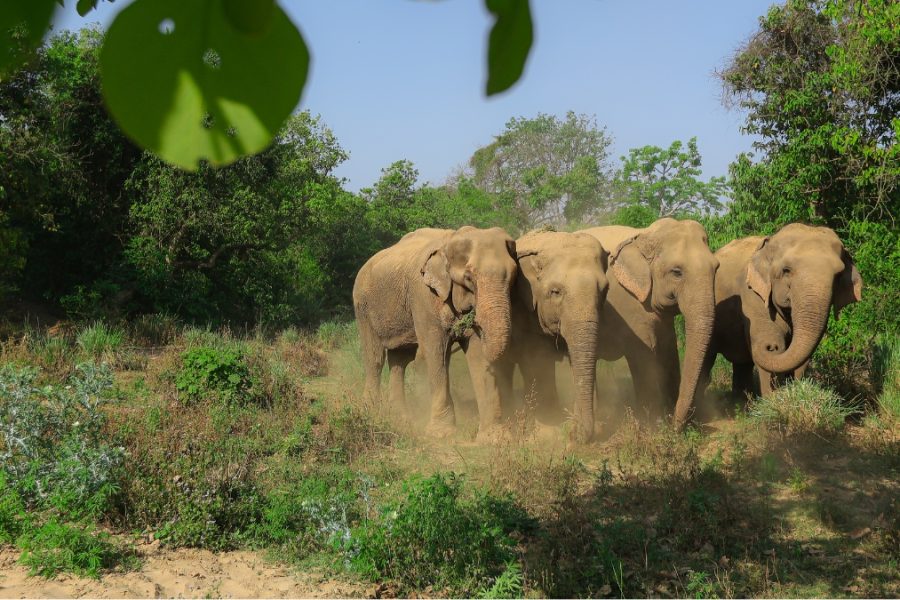The sight of Nina, a geriatric female elephant who is over 60 years old, speaks to us, telling us stories that we wish were untrue. Currently under the care of Wildlife SOS at its Elephant Hospital Campus in Uttar Pradesh, Nina’s life was that of a begging elephant – a harrowing one that spanned 60 long years.
Like Nina, the fate of many such elephants hang in the balance when they are kept in cruel and brutal captive conditions, abused constantly by their owners. When we first saw her, Nina’s fragile body was unable to withstand the crushing weight of the heavy saddle fitted atop her protruding spine. Nina’s days were filled with torment as she was dragged by a rope to walk on hot, tarred roads. This was worsened by her complete loss of vision. Most shockingly, it was done intentionally when she was likely stabbed in the eyes with a bullhook. Just reading that out loud can send shivers down anyone’s spine.
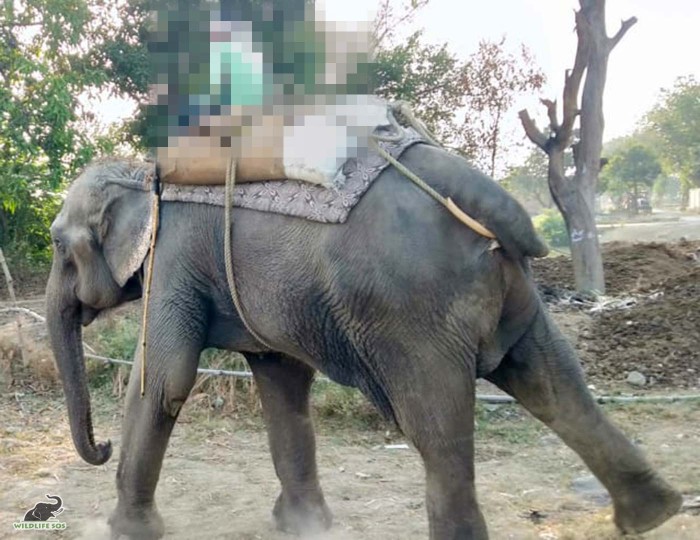
This cruelty is mostly inflicted to deceive onlookers, gain their sympathy and dupe them for money. Similar to Nina’s, the suffering of begging elephants is masked through brightly coloured paints and traditional beliefs that make people overlook their misery. Elephants are made to stand on concrete floors, sometimes in their own dung and urine. Not only is that degrading and unsanitary but they can also cause serious medical problems such as arthritis and foot rot. Their feet are tightly restrained with spiked chains that dig into their flesh and cause excruciating pain. This is the painful life of hundreds of captive elephants living in the shadows, facing torment and exploitation everyday.
This had been Nina’s harsh reality for nearly six decades. She was reduced to a mere prop for wedding processions and was forced to beg on the streets of Uttar Pradesh. She was made to attend weddings even during the pandemic, despite being a blind elephant. Elephants have excellent hearing, but the combined cacophony of loudspeakers and firecrackers at these functions caused severe and unimaginable trauma to Nina. Add to that the deafening noise of honking cars which continuously pricked her sensitive ears.
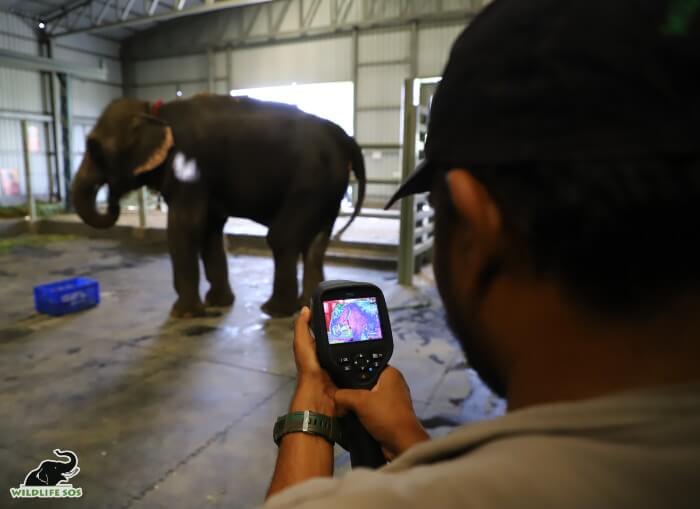
When Wildlife SOS learnt of Nina’s terrible situation, they had to meticulously arrange an undercover operation. One wrong step and her owner would have fled, and we could have lost Nina to the darkness. Our team of veterinarians and elephant caregivers reached to rescue Nina on time and guided her to the Elephant Ambulance. Having never been in a vehicle before, she grew anxious but with the help of lots of bananas and help from our caregiver staff, after several attempts, Nina finally boarded the ambulance.
When Nina arrived at the Elephant Hospital Campus in Mathura, she was severely underweight and malnourished. Our veterinary team gave her some time to settle in her new surroundings before beginning with her diagnosis. Initial examinations revealed that Nina was suffering from severe osteoarthritis in her hind legs. Our vets believed this was due to an unhealed injury after falling into an open ditch, or from a possible collision. Nina’s spinal region also had swelling and inflammation owing to the weight of the saddle which had cut through her flesh.
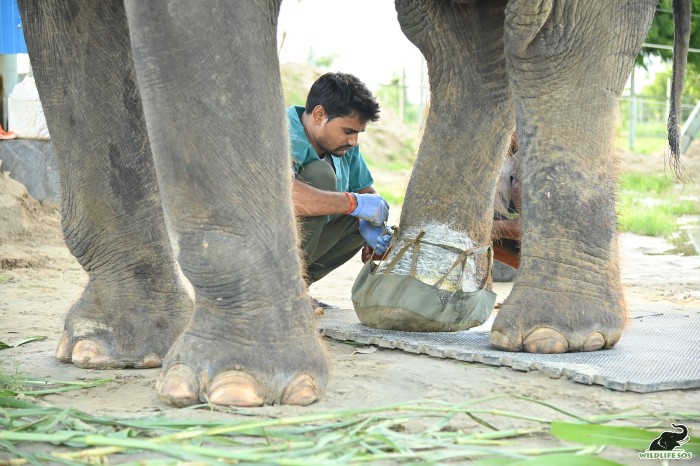
Since being rescued in 2021, Nina’s life has taken a positive turn. Under the care of Wildlife SOS, Nina’s health has witnessed remarkable improvements. Regular treatment for the footpad abscess on her right hindlimb and laser therapy massages to combat the joint related problems provide ample relief to Nina. Additionally, oral medication for pain management, multivitamin supplements and liver tonic, along with a healthy and nutritious diet keep Nina’s health on an upward trajectory.
She roams around the field in her enclosure carefully and slowly, with her caregiver by her side. These walks represent a free-spirited Nina, who is not scared of the whip of a bullhook anymore. Instead, she enjoys the lush green grasses of the hospital area and feels the crisp breeze of her natural surroundings caressing her face.
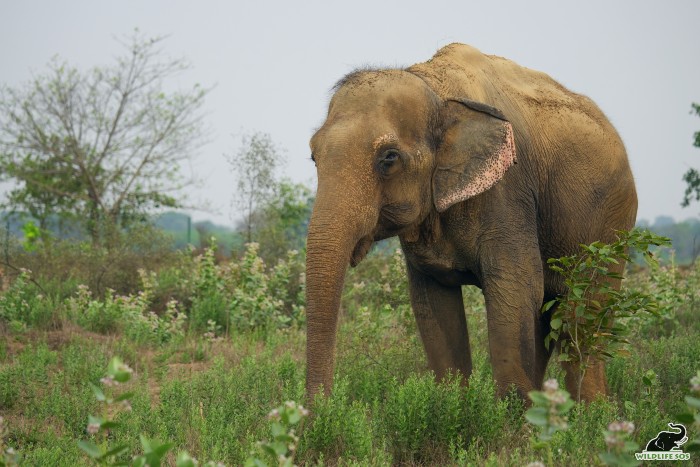
However, not all elephants have the fortune of being rescued from these brutalities. Recently, a 35-year-old male begging elephant named Moti passed away in the foothills of Uttarakhand. A long history of an untreated fracture in his right front leg, a torn and mutilated footpad on his left forelimb and multiple health issues, along with a severe lack of veterinary care, accumulated over the last few years. Wildlife SOS was alerted to Moti’s deteriorating condition and immediately intervened to provide medical support. Despite relentless efforts by the Wildlife SOS team, it was too late to save him. The injuries were brutal, the pain was unbearable and after 35 years of torture and abuse, Moti gave up.
Like Moti, sadly many elephants suffer from life-threatening injuries every year in India due to abuse and inadequate medical care. But there are ways to recognise if an elephant is suffering from distress or not. The most common behaviour in captive elephants that reflects their immense stress is stereotypy or the repetitive and monotonous motion of head bobbing, weaving and swaying. The overused excuse that follows is that the elephant is merely enjoying their surroundings by shaking their head in joy.
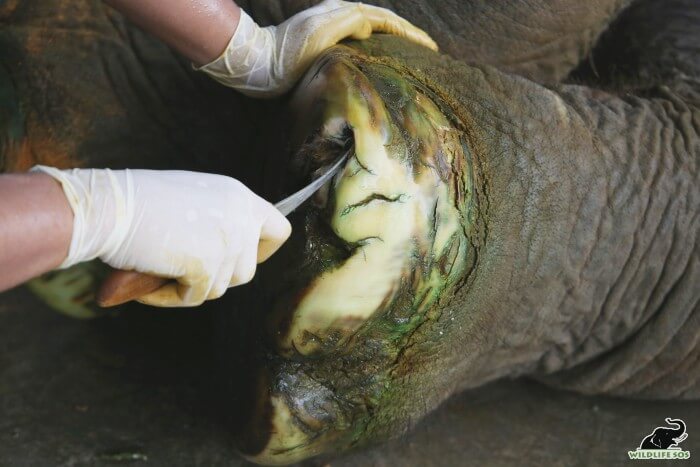
One can also look for physical signs to identify if an elephant is distressed, such as sunken temples, distinct or deformed spines, opacity in eyes and most importantly foot conditions, similar to Nina and Moti. With respect to the conservation of the world’s largest land animal, it is only logical to report any case of elephants in distress. Wildlife SOS has launched a petition to urge and request the Indian government to take strict action, and protect all captive elephants in India through required bi-annual inspections and veterinary health certificates.
Our goal is to make begging elephants a thing of the past. If in our power, we would want to rescue all captive elephants in distress. We want to, with all our might. The question is, after hearing Nina’s story, do you also want the same? If yes, then help us end this suffering, walk this path with us and let us make India’s elephants free. This year, on Save The Elephant Day, sign our petition and speak on behalf of these voiceless animals.



